Chmod Linux File Permissions

Linux File Permission Javatpoint

Linux File Permissions Tutorial How To View And Change Permission

Linux Commands 5 File Permission Chmod Youtube
Q Tbn 3aand9gcq6mtqrr2tbkvj8mt7j61itbsugnnfl3ltc9cdgqfgdswx0kkor Usqp Cau

Directory How Can I Change Permissions Of A Folder Including Its Enclosed Files And Subdirectories Ask Ubuntu

Chmod Archives Yet Another Linux Blog
How to Use chmod Command.
Chmod linux file permissions. We will explain the modes in more detail later in this article. Using the command, we can set permissions (read, write, execute) on a file/directory for the owner, group and the world. Each class can have read, write and execute permissions.
Any files created, modified, or accessed in the Linux root file system follow standard Linux conventions, such as applying the umask to a newly created file. The file or directory owner;. It is important, however, that you understand the only user that can actually modify the permissions or ownership of a file is either the current owner or.
You can use the ‘ stat command ‘ or the ‘ls command’ to check the file permissions. It has -R or –recursive option that change files and directories. In Linux, who can do what to a file or directory is controlled through sets of permissions.
How many types of file permissions are there in Linux?. Linux File Permission :. Linux divides the file permissions into read, write and execute denoted by r,w, and x.
The syntax is as follows:. With the concepts mentioned in this article, you are equipped with sufficient knowledge to handle permissions in Linux-based distros. Chmod 755 -R /opt/lampp/htdocs will recursively set the permissions.
X Permission to execute the file, or, in the case of a directory, search it. The chmod command is used to alter the permissions of a file. Apart from this, there are also some “access right flags.”.
A command line / terminal window ( Ctrl + Alt + T or Ctrl + Alt+F2) A user account with sudo privileges (optional) A Linux system. Illegal option -- - Any help would be greatly appreciated :). As you may know, the chmod (stands for Change mode) command is used to set or change the access permissions of a file or directory in Unix-like systems.
Once you have the file permissions in absolute or symbolic mode, you can use the chmod command to change the file permission. Is there an easy way out to achieve this on a Linux or Unix-like systems?. Chmod a=r foldername to give only read permission for everyone.
Understand how Ubuntu / Linux file permissions and special mode bits work. Using chmod in Symbolic Mode. After changing a file's mode to 555 the file's mode will be displayed in Unix style file lsting as:.
It may be used to add or remove permissions symbolically. The exact command is. Check Permissions using GUI Finding the file (directory) permission via the graphical user interface is simple.
Refer to these chmod command examples if you are not familiar with this command. Chown – change ownership. In linux terminal, to see all the permissions to different files, type ls -l command which lists the files in the working directory in long format.
I was always a little confused on this, but I was finally able to understand how the permissions are displayed and how to change and why we need to chmod a. In a previous article, we looked at how to manage file & directory ownership using the chown. Linux file permission is a very important aspects in terms of security issues for the system administrator of Linux Operating System.
Bash, Shell, Terminal, Command Line cheat sheets linux Ubuntu. Actually, chmod Command in Linux plays a greater role to keep all the files and directories of the system safe and secure so that no unauthorized person. The name speaks for itself.
Chmod – change permissions. One set for the owner of the file, another set for the members of the file’s group, and a final set for everyone else. To assign reasonably secure permissions to files and folders/directories, it's common to give files a permission of 644, and directories a 755 permission, since chmod -R assigns to both.
This article explains how to use chmod command to change the access permissions of files or directories. Types of permissions which we will be changing using chmod command :. However, group and others are only allowed to read (r–).
To start with file permissions, you have to find the current Linux permission settings. In Linux / Unix systems, accessibility to files and directories is determined by file ownership and permissions. The letter or letters representing the owner (u), group (g), other (o) or all (a) followed by a + for adding permissions or a – for taking away permissions and then the letter for the permission (r for read, w for write and x for execute).In the above example, I added the execute permission for all users.
Chmod Command in Linux Linux File Permission Introduction to Linux File Permission. Read (`r'), write (`w'), and execute (`x'). Just select the appropriate permissions and it will tell you the permissions in both absolute and symbolic mode.
By now, you should have a working understanding of file permissions, file ownership, and how to change the file permissions for the different user groups. Transferring Ownership with chown. Neither command is difficult to use.
Each permission may be `on' or `off' for each of three categories of users:. Mykyta Dolmatov / Getty Images. File permissions in Linux file system are managed in three distinct user classes:.
If you need to list a file's permissions, use the ls command. Users can simply modify file permissions using the chmod (change mode) command. The permissions control the actions that can be performed on the file or directory.
Linux chmod command is used to change access permissions of files and directories. The request is filtered by the umask.The name is an abbreviation of change mode. Accessing files in the Linux root file system from Linux.
Learn how to change these permissions using the chmod command. File permission can be represented in a symbolic or numeric (octal) format. To change directory permissions for everyone, use “u” for users, “g” for group, “o” for others, and “ugo” or “a” (for all).
To change file access permissions you need to use the chmod command. Other people in the same group as the owner;. A sample permission string would be chmod 640 file1, which means that the owner has read and write permissions, the group has read permissions, and all other user have no rights to the file.
The command can accept one or more files and/or directories separated by space as arguments. There are two options to choose from, depending on your personal preference:. User/owner, group and others/public.
Set the permissions for a file or directory by using the chmod command. You can configure your file permissions inside of your Windows drives using the mount options in wsl. Simply enter this line:.
On Unix-like operating systems, a set of flags associated with each file determines who can access that file, and how they can access it. Chmod Command in Linux (File Permissions) Written by Admin, Updated On June 4,. In Linux, you can easily change the file permissions by right-clicking the file or folder and select “Properties”.
Each row has 2 examples, one for setting that permission for a file, and one for a directory named ‘dir’. There's no way to set the permissions for files automatically in only this directory that are created after you set the permissions, but you could change your system-wide default file permissions with by setting umask 022. How to Set File Permissions Using `chmod' Files and directories in Unix may have three types of permissions:.
There are three user types on a Linux system viz. Checking through the graphical interface or using the command. Chmod Modifies File Permissions.
In the terminal, the command to use to change file permission is chmod. Read permissions identified by ‘r‘ Write permissions identified by ‘w‘ Execute permissions identified by ‘x‘ To check the file permissions of any file, use the ls command and the -l option. Again as Rob has said, in 13,.
The general syntax to recursively change the file’s permissions is as follows:. Adding the numbers in each section results in permissions of 664. The tool will provide you with an octal code that corresponds to these permissions which can then be applied to relevant directories and files with chmod.
Chmod is a great Linux command for manipulating file and directory permissions. There are 2 ways to use the command -. The chmod command allows you to change the permissions on a file using either a symbolic or numeric mode or a reference file.
Linux File Permissions, chmod, & umask. There are two ways to use chmod — the symbolic mode and the absolute mode. So if the executable permission of chmod is removed, you can't assign the permissions to any programs, including the chmod command itself.
There are three sets of permissions. The commands for modifying file permissions and ownership are:. For example, to add execute permissions for the owner of a file you would run:.
Chmod ugo+rwx foldername to give read, write, and execute to everyone. Chmod is a command in Linux and other Unix-like operating systems that allows to ch ange the permissions (or access mod e) of a file or directory. Myfile.txt – the name of the file/folder.
The easiest way for a beginner to modify file or directory permissions is to use the symbolic mode. Each file on the Linux systems bears a set of permissions. View (u)ser, (g)roup and (o)thers permissions for chmod 555 (chmod a+rwx,u-w,g-w,o-w) or use free online chmod calculator to modify permissions easily.
Chmod -R MODE DIRECTORY. The main difference between access rights for files and directories is that the x permission on a file grants permission to execute it, where on a directory, it grants permission to enter it. Chmod (this Tutorial's subject) and chown are designed to be able to change the defaults of user access as part of a secure plan by the Administrator, as well as, in the case of chown, modifying downloaded files to make them executable.
In Unix and Unix-like operating systems, chmod is the command and system call which is used to change the access permissions of file system objects (files and directories).It is also used to change special mode flags. Let’s say we want to change Linux file permissions from -rwxrw-rw-to -rwx-r–r–. The chmod command, like other commands, can be executed from the command line or through a script file.
How to Change Groups of Files and Directories in Linux. To recursively operate on all files and directories under a given directory, use the chmod command with the -R, (--recursive) option. On a Linux system, each file and directory is assigned access rights for the owner of the file, the members of a group of related users, and everybody else.
The highly productive Linux system offers various levels of permission to ensure that the user has enough ways to interact with files and directories. Recursive chmod using find, pipemill, and sudo. Some details about the user, group and other you may need to know to clear your basics.
To change the file or the directory permissions, you use the chmod (change mode) command. Use sudo, the find command, and a pipemill to chmod as in the following examples. In Linux systems, the chmod command is used to change the permissions and access mode of files or directories.
The chmod command allows you to change the permissions of files using symbolic or numeric mode. Understanding file permissions and ownership in Linux Now that you are aware of the basic terminology of file permissions and ownership, it’s time to see it in action. If you use the ls command with option -l on a file, you’ll see an output like this:.
In this article, you will learn how to change permissions of any file or directory with chmod command. User, Group and Other. Chmod command in Linux is used to change or assign permissions on files and directories.
Chmod 744 file name By executing this command, the owner can read, write, and execute the file (rwx). If you want an easy way to know the Linux file permission in numeric or symbolic mode, you can use this chmod calculator. The chmod command changes the access permissions of files and folders.
Rights can be assigned to read a file, to write a file, and to execute a file (i.e., run the file as a program). $ sudo chmod <specify the file permissions> <specify the file/directory name> Special Permissions. In Linux, files and directories are treated similarly.
These flags are called file permissions or modes, as in "mode of access." The command name chmod stands for "change mode." It restricts the way a file can be accessed. So I already own those files and folders, without having to change anything. There will be a Permission tab where you can change the file permissions.
Select the permissions you require below. 9 Comments Originally posted October 13, 14. How To Change File Permissions In Linux Using ‘chmod’ Command.
Change permission on all the files in a directory recursively. There are 3 permission types that are associated with a file. Find out how default permissions for new files are configured via a user's umask value.
I have a number of files in this directory and I need to change permission from 0777 to only if that file has 777 permissions. We have already described the Linux file permissions. File Permissions and ‘chmod’ Since I work with Linux in both Advanced Programming (C) and in my DevTech course, I had to implement file permissions and ‘chmod’ my shell scripts.
View (u)ser, (g)roup and (o)thers permissions for chmod 600 (chmod a+rwx,u-x,g-rwx,o-rwx) or use free online chmod calculator to modify permissions easily. I'm learning how to change the permissions of files and want to copy the permissions of one file to another using the chmod function however it keeps returning chmod:.
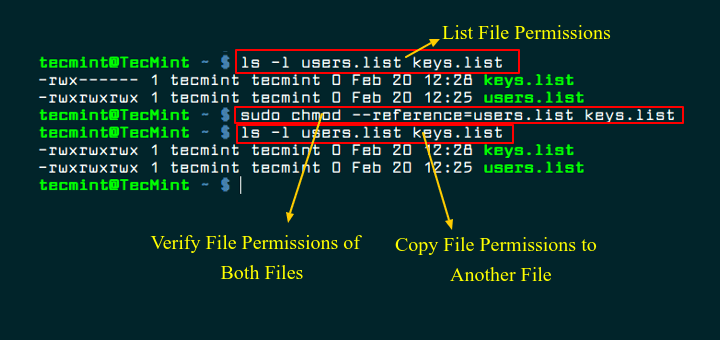
How To Copy File Permissions And Ownership To Another File In Linux
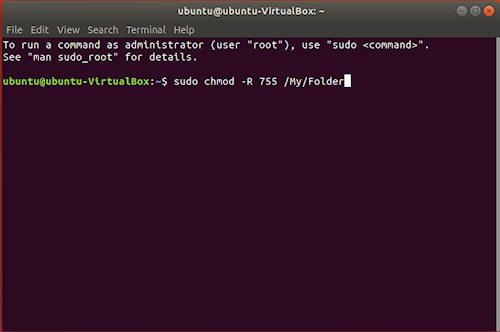
Introduction To Linux File Permissions Attributes Chmod Globo Tech

Understanding Unix Permissions And File Types Unix Linux Stack Exchange

Linux Permissions Guide Plex Support

How To Use The Chmod Command On Linux

Linux Chmod Command Linuxfordevices

A Unix And Linux Permissions Primer Daniel Miessler

Solved File Permissions In Linux Can Be Set Using A 3 Dig Chegg Com

Ownership And Permissions

File Permissions In Linux Dzone Open Source

How To Use Chmod Command In Linux Explained With Examples

Changing File Permissions In Linux The Chmod Command By Saswat Subhajyoti Mallick Medium

Permissions In Linux Geeksforgeeks

Chmod 777 What Does This Mean Learn Linux Permissions Easy Way

Unix Linux Os X File Permissions

Linux File System Nevigation Filing System Reading Writing Linux

Deciphering Linux File System Permissions Pressidium Managed Wordpress Hosting
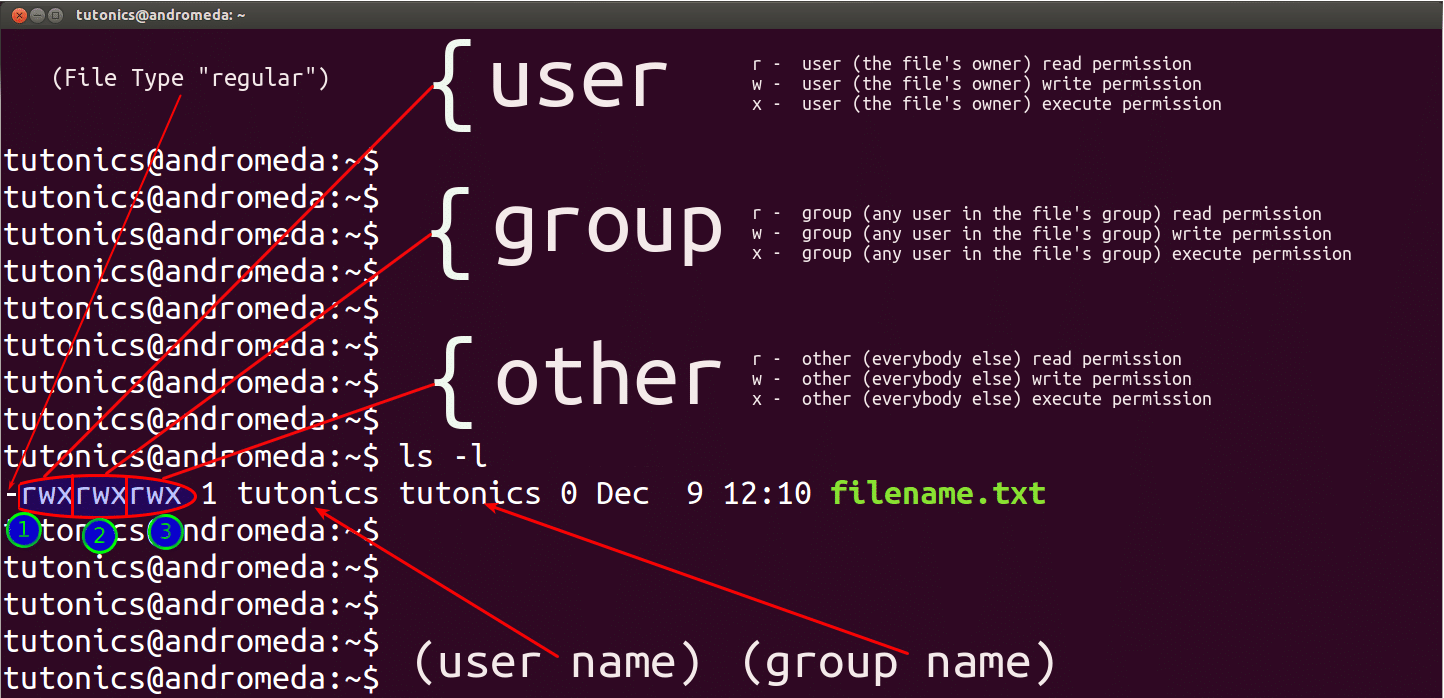
Linux File Permissions Tutorial For Beginners

How To Use The Chmod Command On Linux

Chmod File Permissions In Linux Unix
Q Tbn 3aand9gcq1nsq3kxri7ryrifobs2rfobawbv4hezfw9 Ldf4feblahyn09 Usqp Cau
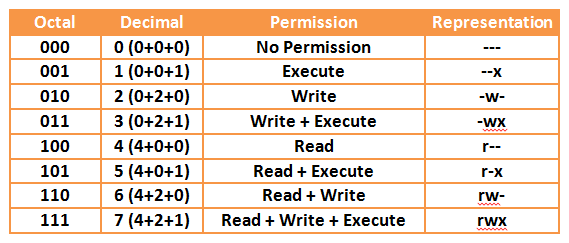
Your Own Linux Chmod Basics Of Files Directories Permissions And Use Of Chmod

Linux File Permissions Complete Guide Devconnected

How To Use Linux File Permissions And Ownership On Alibaba Cloud Ecs Dzone Open Source

Chmod 777 A Definitive Guide To File Permissions

How To Deny File Permissions To Everyone Except Yourself In Linux Linuxhostsupport
/i7guGwCYcn-34e068e148ae4e918b29c86cd2d5740e.png)
Configuring Unix Linux File And Directory Access Rights

How To Set And Manage File Permission In Linux Part 1

Learning The Shell Lesson 9 Permissions

Linux File Permission Change By Chmod Command In Linux Guide For Beginners

Chmod Command In Linux File Permissions Designlinux

Unix File Permissions Computer Science

Permissions In Linux Geeksforgeeks
Linux Chmod Tips

Chmod 777 In Terminal The Command To Make All Changes Affect Every File And Folder Ask Ubuntu

File Security
Q Tbn 3aand9gcr2lfpzbutqythmvbwafnxvyggqfj7hnw6fhh Kcozkk8m5 V7o Usqp Cau

How To Change File Permissions In Linux Skillsugar

File Permissions In Linux Unix With Example

Understanding Linux File Permissions With Chmod Umask Chown And Chgrp Liquidon Net

How To Change Directory Permissions In Linux Pluralsight

Chmod Recursive Change Permissions Recursively On Files Folders
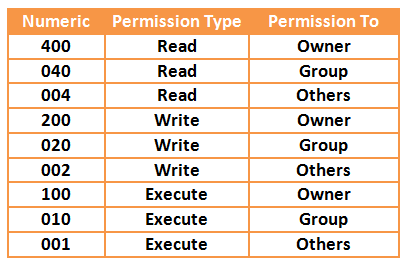
Your Own Linux Chmod Basics Of Files Directories Permissions And Use Of Chmod

Change File Permissions Easily With Online Chmod Calculator By Chmodcalcu Issuu

Change File Permissions Recursively Linux Linux Hint

Linux File Folder Permissions

Understanding Linux Permissions And Chmod Usage

What Is Chmod How To Use Chmod For Wordpress File Permissions

Linux Unix Permissions And Attributes Linuxsecrets
Q Tbn 3aand9gcrjnvlxj0s Bjlyqdmcffgnaicqwuoecwomv8yezuw Usqp Cau
Video Linux File Permissions Chmod And Chown Linux Org

Understanding File Permissions And Access Rights In Linux Linux Stall

Pin By Dr Stefan Gruenwald On Cheatsheets Computer Science Programming Learn Javascript Linux Operating System

Setting File And Directory Permissions Computational And Information Systems Laboratory

How Did The Number 777 In Chmod 777 Come Out Under Linux Laptrinhx

Linux File Permissions Know The Reason Behind That Chmod 777 By Abhishek Chandra Medium

How Do Linux File Permissions Work

Chmod Options Permissions Files Linux Pocket Guide Book

Linux Admin 101 File Permissions With Chmod Chgrp And Chown Trash Computer

Understanding File Permissions

Chmod 777 What Does It Really Mean Make Tech Easier

Chmod Wikipedia

Understanding Linux Permissions And Chmod Usage
Why Would Using Chmod 777 Recursively From The Root Cause A Linux Box To Not Boot I Could Understand This If I Were Limiting Permissions But Why Would Adding Permissions Cause This

Linux Terminal File Permissions Chmod Chown And Chgrp Youtube

How To Change File Permissions Recursively With Chmod In Linux

Explained How To Use Chmod Command Complete Guide Youtube

Unix Permissions

Understand Linux File Permissions Using Chmod And Chown Commands Programming Tips For Versatile Coders

How To Change File Permissions Recursively With Chmod In Linux

Chmod 777 What Does It Really Mean Make Tech Easier

How To Change Directory Permissions In Linux Pluralsight
Your Own Linux Chmod Basics Of Files Directories Permissions And Use Of Chmod

Chmod 777 755 655 644 And More Permissions Linux Files Tutorials

Linux Permissions An Introduction To Chmod Enable Sysadmin

An Introduction To Linux File Permissions Boolean World

Modify File Permissions With Chmod Linode
.png)
File Permissions In Linux Unix With Example

Linux Mac And Unix File Permissions Part 1 Steven Barrett Co Uk

Linux Chmod Example Linux Hint

File Permissions In Linux Unix With Example

Linux File Permissions And Chmod Doug Vitale Tech Blog

Chmod Command In Linux File Permissions Kirelos Blog
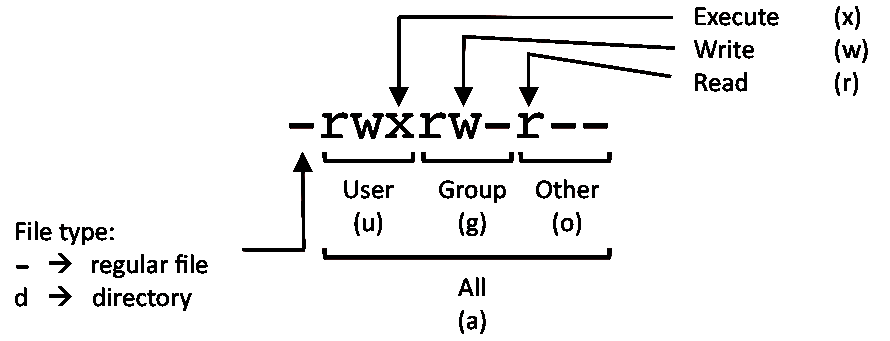
Linux Command Cheat Sheet

Linux File Permissions Complete Guide Devconnected

How To Change Directory Permissions In Linux Pluralsight

Csc128 Permissions And Links Chmod And Ls

The Chmod Command And Linux File Permissions Explained

Understanding File Permissions 2buntu

What Is Chmod 777

Linux Users And Groups Linode

Use Of Chmod Command In Linux Devopsdex

Chmod Cheatsheet Linux

Chmod Command In Linux File Permissions

Understanding Basic File Permissions And Ownership In Linux The Geek Diary

How To Change File Permissions Hostwinds Guides

Linux Chmod Command Linuxfordevices

Chmod Command In Linux With Examples Geeksforgeeks



